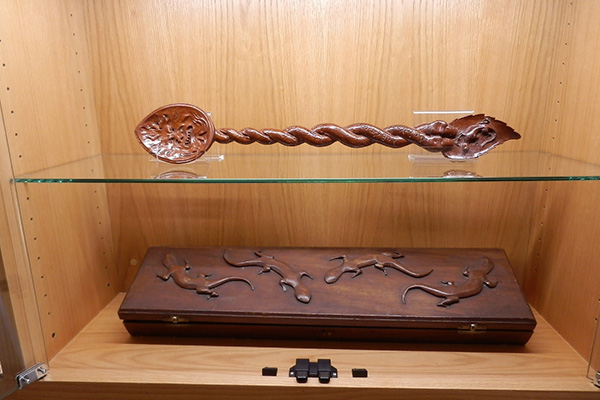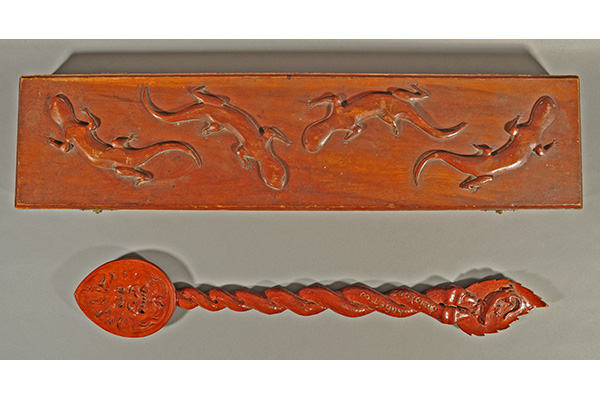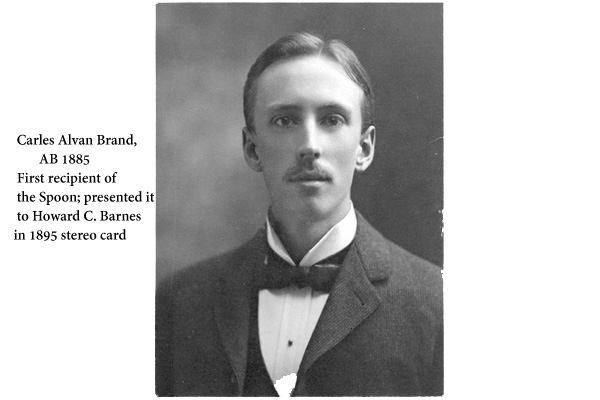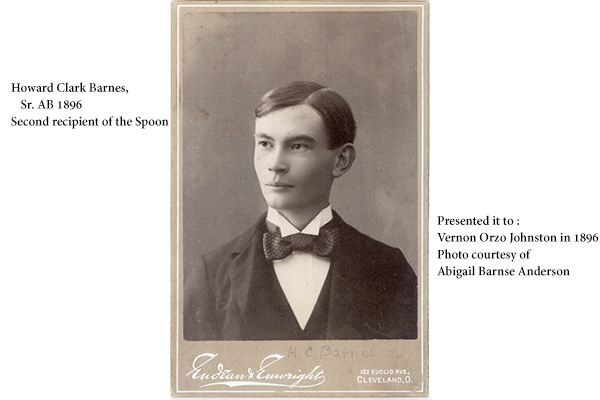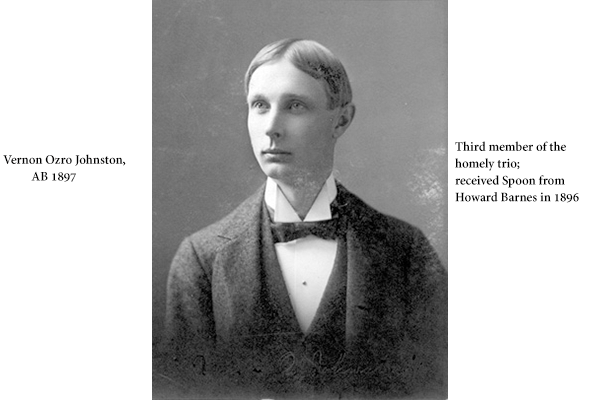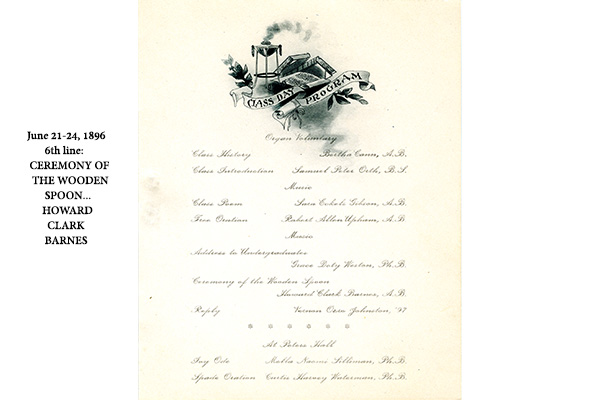Home > Virtual Exhibits > The Great Wooden Spoon
The Great Wooden Spoon
Introduction
In 1895, Class Day exercises during commencement broke with tradition in one odd respect. Male members of the senior class selected the homeliest man among them and presented the designate with a great wooden spoon. During the inaugural "Ceremony of the Wooden Spoon," the homeliest man in the class of 1895, Charles Alvan Brand, passed the spoon to the homeliest junior, Howard Clark Barnes.
The details of this peculiar rite were handsomely recounted in the Oberlin Review of June 19, 1895,
Mr. Brand stated that it was an undoubted axiom that the harder and the longer a man works, the homelier he becomes. He claimed Socrates and Lincoln as patron saints of the order. After a very humorous introduction, he deeded the ‘spoon’ to the care of Mr. Barnes of the Junior class, who aptly responded, saying that history was being made this day. Numerous roasts and personal hits were abundant in the speeches of both gentleman. (p 574-5)
During commencement proceedings in 1896, the observance took place again as Mr. Barnes surrendered the spoon to homeliest junior, Vernon Ozro Johnston. (It's fair to say that Vernon's looks weren't all that bad, but with a middle name like Ozro, the ribbing of his peers was preordained.) From here, the saga of this coveted prize becomes vague. No record exists of the ceremony having taken place during the 1897 commencement or thereafter. Evidence does exists however, showing that by 1953, Charles Brand had somehow succeeded in reclaiming the spoon he treasured. Upon examining the photos of these two not-altogether-unsightly guys, exhibit onlookers may be left wondering what constituted "homely" in the 1890s. Perhaps it's a misconception that male students of distant eras had better things to do with their time than engage in silly frivolities. This exhibit was assembled by Graduate Student Intern Chris Juhasz (Kent State University School of Library and Information Science).
